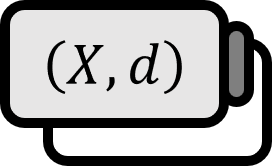Lipschitz Continuity
Definition1
For two metric spaces $(X, d_{X})$ and $(Y, d_{Y})$, let’s assume that a function $f : X \to Y$ is given. If there exists a constant $K$ such that the following holds for all $x_{1}, x_{2} \in X$, then $f$ is called $K$-Lipschitz continuous.
$$ d_{Y} \big( f(x_{1}), f(x_{2}) \big) \le K d_{X} \big( x_{1}, x_{2} \big) $$
Such a constant $K$ is called the Lipschitz constant.
Explanation
It is named after the German mathematician Rudolf Lipschitz. Saying that $f$ is Lipschitz continuous means that there is a maximum value for the average rate of change. If it is Lipschitz continuous for all open balls, it is called locally Lipschitz continuous. If $X, Y$ is a Euclidean space, then,
$$ \left| f(x_{2}) - f(x_{1}) \right| \le K \left| x_{2} - x_{1} \right| $$
It’s a condition related to the stability of solutions in numerical analysis of differential equations.
Properties
If $f : \mathbb{R} \to \mathbb{R}$ is $K$-Lipschitz continuous, then $f$ is:
- Absolutely continuous.
- Differentiable almost everywhere.
- Almost everywhere $\left| f^{\prime} \right| \le K$.
A differentiable $f$ being Lipschitz continuous is equivalent to $f^{\prime}$ being a bounded function.
